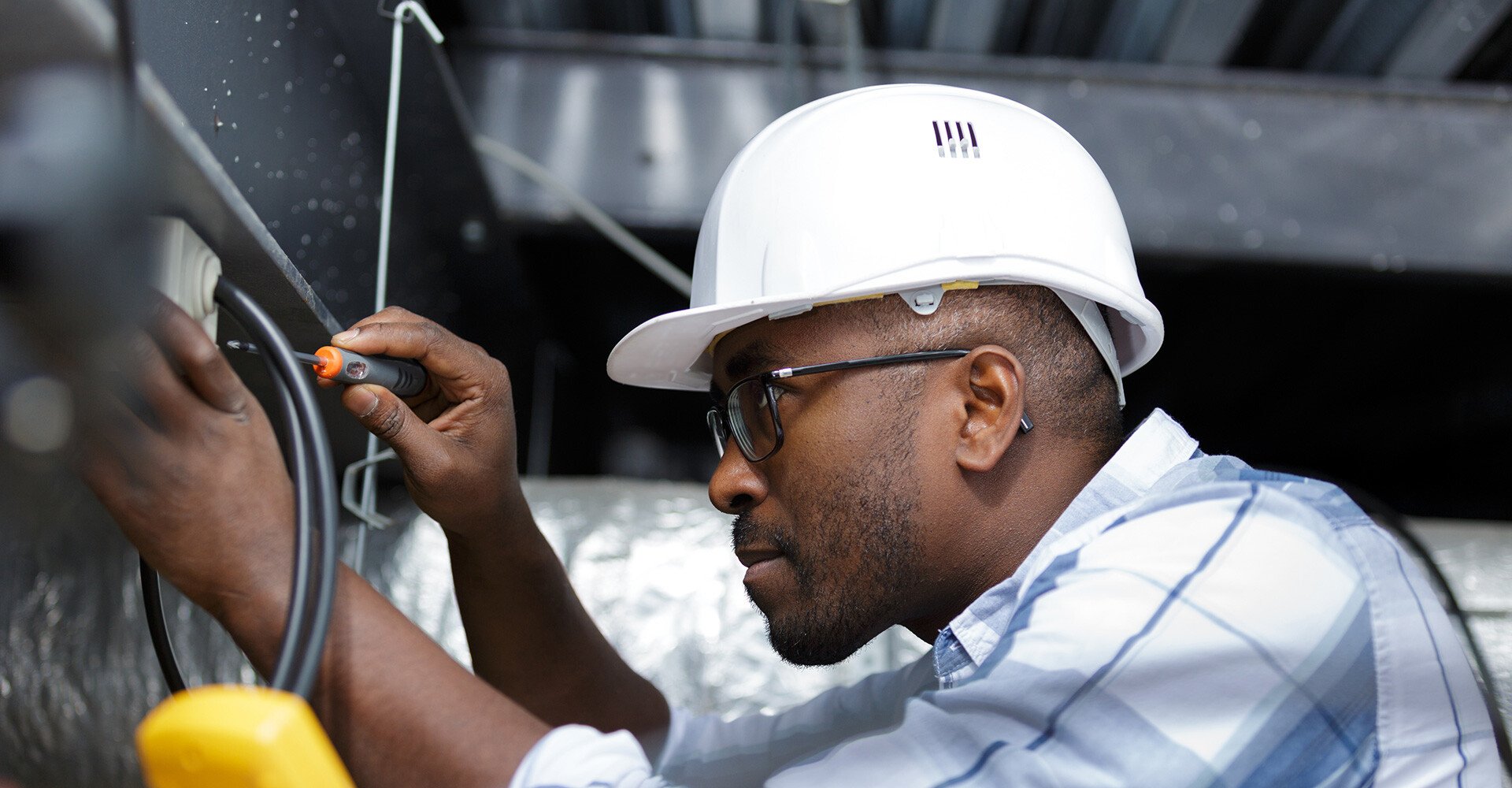The Electrician Labor Shortage: Challenges and Opportunities in the U.S. Trade Market
The U.S. labor market has seen dramatic changes over the past decade, reshaping industries from manufacturing to technology. Among the trades, electricians have been especially impacted as demand continues to grow while the available labor force faces new challenges. These skilled workers are the backbone of our energy infrastructure, keeping residential, commercial, and industrial buildings safe, efficient, and operational.
At Functional Devices, we recognize the importance of electricians not only to the nation’s infrastructure but also to the success of our own products in the field. From relays to power supplies, our devices are designed with electricians in mind, making installation and troubleshooting faster and more reliable. We take pride in supporting the trades by delivering solutions that reduce complexity on the job site.
Our commitment doesn’t stop with our products: it extends to our own workforce. Functional Devices is powered by a dedicated team of engineers, assemblers, and support staff who understand the value of quality craftsmanship and dependable service. By combining innovative products with a strong labor force, we’re helping electricians and contractors nationwide meet the demands of today’s evolving market. Interested in joining our team? Check out our available job openings.
In this article, we’ll explore the current state of the electrician labor market in the U.S., highlighting key trends, challenges, and opportunities shaping the future of the trade.

Overview of the U.S. Job Market for Electricians
The U.S. job market for electricians has remained robust, driven by the ongoing need for electrical installations, maintenance, and repairs in various settings. According to the U.S. Bureau of Labor Statistics (BLS), the employment of electricians is projected to grow by 6% from 2022 to 2032, faster than the average for all occupations. This growth is fueled by several factors, including the increasing complexity of electrical systems, the rise of renewable energy technologies, and the expansion of infrastructure projects across the country.
However, while the demand for electricians remains strong, the supply of qualified workers has not kept pace. The aging workforce, combined with a lack of interest in trade careers among younger generations, has led to a shortage of skilled electricians in many regions. This shortage has significant implications for the U.S. labor market, driving up electrician labor rates and creating challenges for businesses and consumers alike.
Electrician Labor Rates in the Current U.S. Job Market
Electrician labor rates have been on the rise in recent years, reflecting the growing demand for skilled labor and the scarcity of qualified workers. The average hourly wage for electricians in the U.S. was $32.60 as of May 2023, according to the BLS. However, wages can vary widely depending on factors such as geographic location, level of experience, and the specific industry in which an electrician works.
In some regions, particularly in urban areas with high living costs, electrician labor rates can be significantly higher. For example, electricians in the San Francisco Bay Area, New York City, and Washington, D.C. typically earn well above the national average. Conversely, in rural areas with lower demand and a lower cost of living, wages may be lower.
The increase in electrician labor rates is also driven by the need to attract and retain workers in a competitive job market. As businesses struggle to find qualified electricians, they are often willing to offer higher wages, signing bonuses, and other incentives to secure the talent they need. This trend is expected to continue as the demand for electricians outstrips supply in many parts of the country.
Factors Contributing to the Electrician Labor Shortage

Several factors contribute to the shortage of electricians in the U.S. labor market. One of the primary drivers is the aging workforce. A significant portion of the current electrician workforce is nearing retirement age, and there are not enough younger workers entering the trade to replace them. The BLS reports that the median age of electricians is 43 years, with many electricians expected to retire within the next decade.
Another contributing factor is the perception of trade careers among younger generations. Despite the strong job prospects and competitive wages associated with skilled trades like electrical work, many young people are encouraged to pursue four-year college degrees instead of vocational training. This has led to a decline in the number of new electricians entering the workforce, exacerbating the labor shortage.
Additionally, the complexity of modern electrical systems has increased the demand for highly skilled electricians. As buildings become more technologically advanced and energy-efficient, the need for electricians who can install, maintain, and repair sophisticated electrical systems has grown. This has raised the bar for entry into the profession, requiring more extensive training and education.
Impact of the Electrician Labor Shortage on the U.S. Job Market
The shortage of electricians is having a significant impact on the U.S. job market and broader economy. Fewer available electricians are driving up labor costs, increasing the overall expense of construction projects, renovations, and repairs. In the construction industry, this shortage can lead to delays and higher budgets, slowing the pace of new builds and renovations.
The ripple effects extend beyond construction. Industries like manufacturing, utilities, and energy production rely heavily on skilled electricians, and the shortage can limit their growth and efficiency. Additionally, as the U.S. expands renewable energy initiatives, a lack of electricians trained in solar, wind, and energy storage could slow progress on cleaner energy adoption and efforts to reduce greenhouse gas emissions.
Opportunities and Solutions for Addressing the Electrician Labor Shortage
The electrician labor shortage presents challenges, but it also creates opportunities for growth. Addressing it will require a mix of education, training, and workforce development.
- Promoting Trade Careers. Encouraging more young people to enter the trades is essential. Outreach programs that highlight job security, strong wages, and advancement opportunities can help shift perceptions and boost interest in vocational paths.
- Expanding Apprenticeships. Apprenticeships combine hands-on experience with classroom training and are one of the best ways to build a skilled workforce. Expanding access and funding for these programs can attract more workers to the trade.
- Investing in Workforce Development. Employers, associations, and government agencies can support the labor pool with scholarships, grants, and continuing education to keep electricians competitive as the industry evolves.
- Leveraging Technology & Policy. New tools, software, and online training platforms can increase efficiency and widen access to education. At the same time, supportive policies that invest in infrastructure and renewable energy can help ensure a strong pipeline of skilled electricians for the future.
Frequently Asks Questions About Becoming an Electrician
With the growing demand for skilled electricians and a nationwide labor shortage, many people are asking what it takes to enter this essential trade. Below are answers to some of the most common questions about becoming an electrician.
Q: How do I become an electrician?
A: Most electricians enter the trade through an apprenticeship program, which combines classroom instruction with paid on-the-job training. These programs usually last four to five years.
Q: Do I need a license?
A: Yes. After completing your training, you’ll typically need to pass a state or local licensing exam that covers electrical theory, safety practices, and the national electrical code.
Q: Is being an electrician a good career?
A: Absolutely. Electricians enjoy strong job security, competitive wages, and opportunities to advance into specialized fields or supervisory roles.
Q: What skills are important?
A: Problem-solving, attention to detail, and mechanical aptitude are essential. Strong math skills and the ability to work safely under pressure are also critical.
Q: Can technology help me learn?
A: Yes. Many programs now use online training platforms to supplement hands-on work, making it easier to start and grow in the field.
Powering the Future: Addressing the U.S. Electrician Workforce GapPowering the Future: Addressing the U.S. Electrician Workforce Gap
The electrician labor market faces real challenges, but it also offers opportunities for innovation and growth. With demand continuing to rise, the shortage of skilled workers highlights the importance of training, education, and industry support to ensure a strong and resilient workforce.
At Functional Devices, we’re committed to supporting electricians and contractors with reliable, easy-to-install solutions like our RIB relays, power supplies, and sensors. By simplifying installation and reducing time on the job, our products help offset labor shortages and keep projects moving forward efficiently. Have questions or need product guidance? Contact our team today to learn how we can support your next project.
About Functional Devices, Inc.

Functional Devices, Inc., located in the United States of America, has been designing and manufacturing quality electronic devices since 1969. Our mission is to enhance lives in buildings and beyond. We do so by designing and manufacturing reliable, high-quality products for the building automation industry. Our suite of product offerings include RIB relays, current sensors, power controls, power supplies, transformers, lighting controls, and more.
We test 100% of our products, which leads to less than 1 out of every 16,000 products experiencing a failure in the field.
Simply put, we provide users of our various product confidence and peace of mind in every box.

